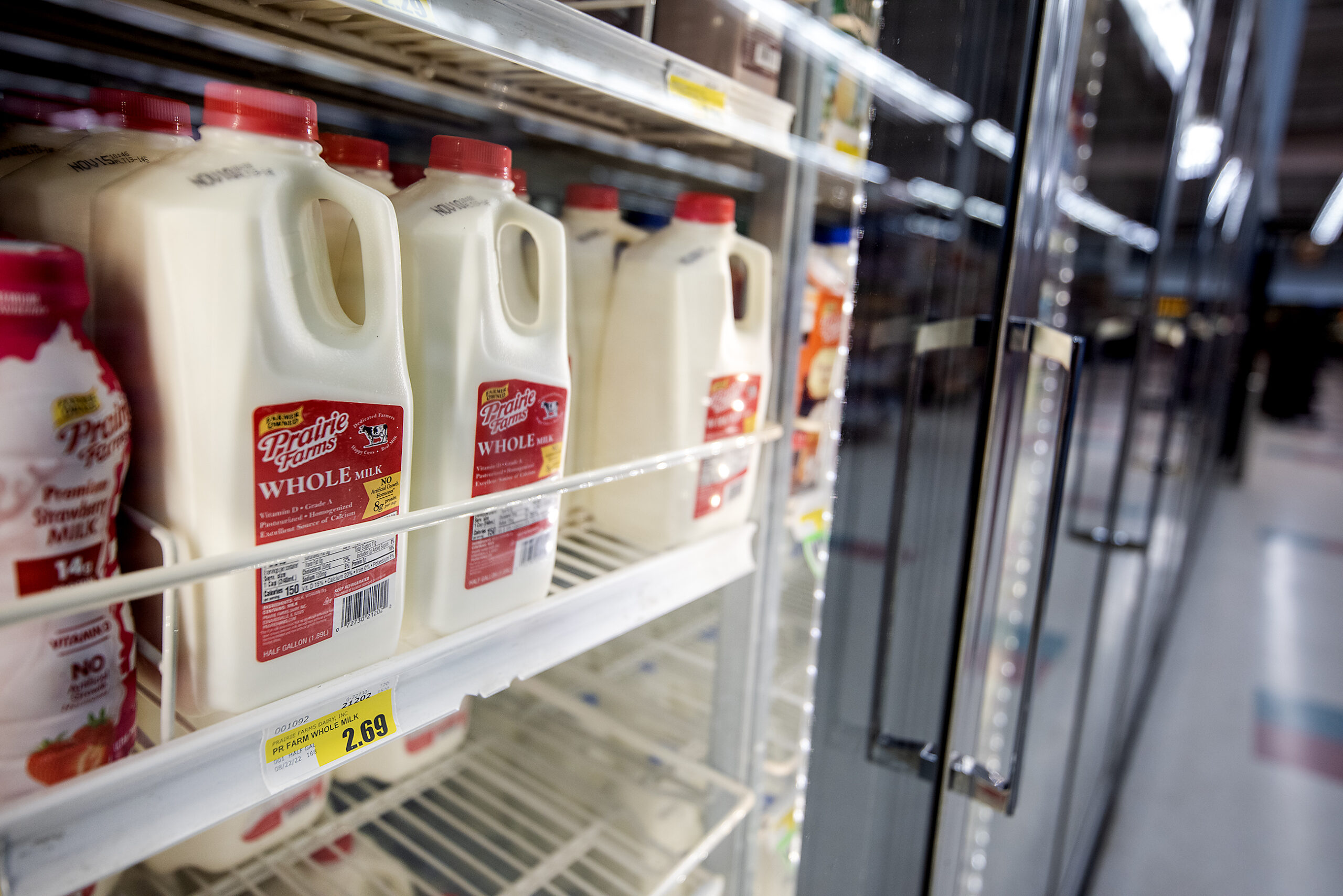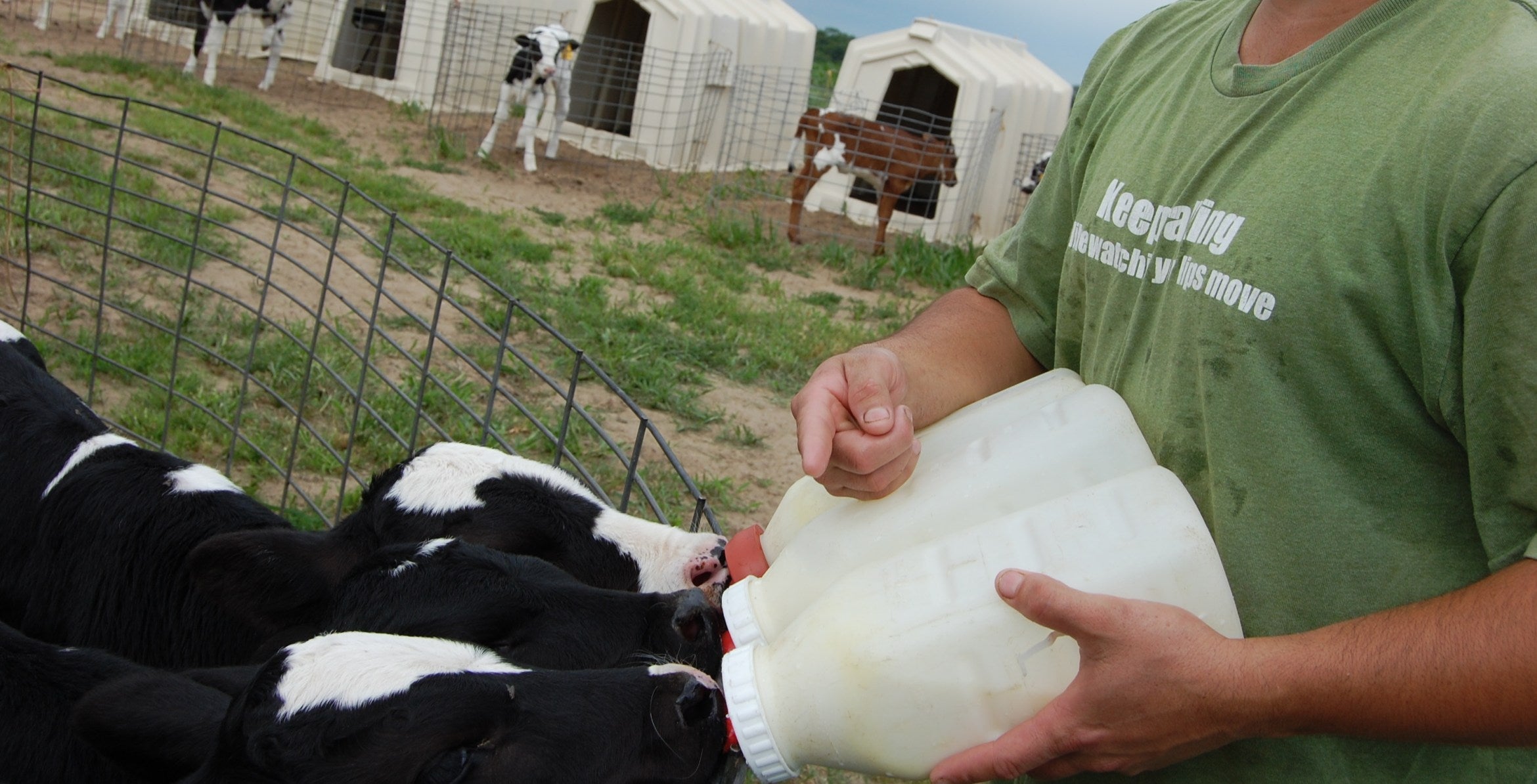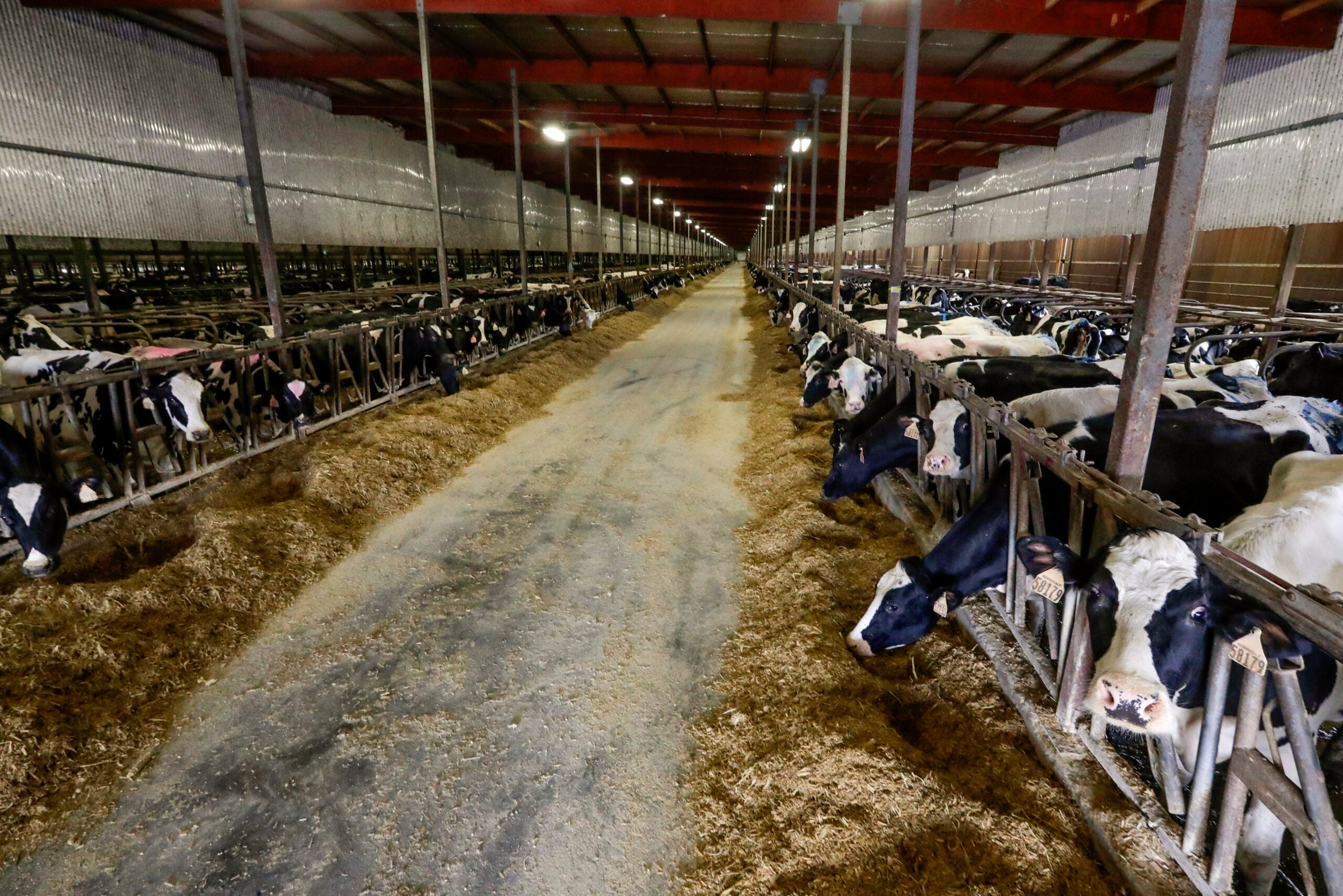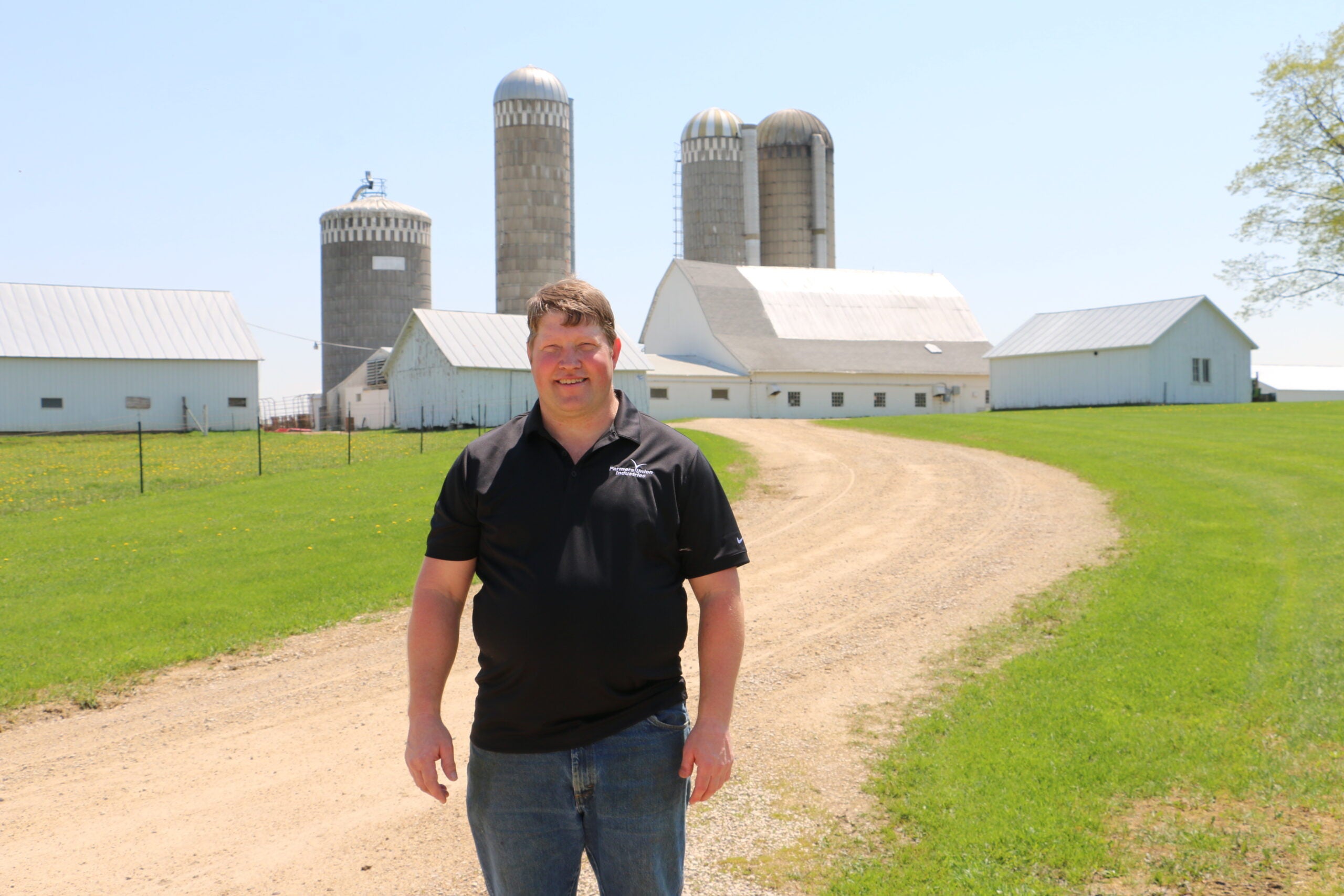Wisconsin has seen a steady decline in dairy farms over the last decade. In 2003, the state was home to more than 16,000 dairy farms, but a new report from the U.S. Department of Agriculture shows that number is now less than 6,000.
One of the reasons farmers are exiting the industry is because it’s become harder to make a profit from milk. A national trade association of dairy cooperatives hopes to change that by updating the system for pricing and selling milk across the county.
The National Milk Producers Federation has proposed five changes to the federal milk marketing order system. In a letter to the head of USDA’s Agricultural Marketing Service, the group asked for a federal hearing to consider their proposal and begin the process for making changes to the system.
News with a little more humanity
WPR’s “Wisconsin Today” newsletter keeps you connected to the state you love without feeling overwhelmed. No paywall. No agenda. No corporate filter.
Federal milk marketing orders were first created in the 1930s in order to establish a minimum price for milk and stabilize the market for the perishable product. It’s a long-running industry joke that most people don’t understand the details of how milk gets priced. Many regulations used today were created during a reform of the system in 2000.
Jeff Lyon is general manager of FarmFirst Dairy Cooperative, a Madison-based farmer group that is part of the National Milk Producers Federation. He said the group was prompted to look at updating the system during the COVID-19 pandemic. Changes to consumer eating and demand for certain dairy products revealed weaknesses in the way milk is priced.
“It caused great distress and lost money for farmers,” Lyon said. “People wanted to try to do an emergency hearing. USDA decided not to do it, but it got people thinking that we do need to do some things and look at the federal orders.”
The federation’s proposals include changing the price formula for beverage milk back to the version that was in place prior to the 2018 Farm Bill, a change supported by the Wisconsin Farm Bureau and other organizations. It also includes updating the standard for milk components like protein and nonfat solids. The change is meant to better reflect today’s quality of milk due to improved genetics and better feed practices.
Chuck Nicholson, ag economist at the University of Wisconsin-Madison, said these more technical updates are needed because the industry has changed since the last rewrite of the formulas. He said some of the biggest changes in the last two decades have been around manufacturers’ costs for turning raw milk into the products on store shelves.
Milk price formulas work backwards by taking the value of finished dairy products and subtracting the cost of processing, called a “make allowance,” in order to get the price of milk that plants have to pay farms. Nicholson said these allowances haven’t been updated since 2008.
“A lot of things obviously have changed in 15 years, including a lot of cost increases particularly for things like labor and for utilities,” he said. “So it has become harder and harder to use that old value to accurately represent what it takes to transform a pound of farm milk into a certain amount of cheese.”
Nicholson says this tension is one of the key drivers for why the National Milk Producers Federation and other industry groups are pushing to update the system.
The group’s proposal calls for increasing make allowances for butter, nonfat dry milk, cheese and dry whey to between 21 and 24 cents per pound, an increase of 3 or 4 cents for each product.
In their letter, the federation says inadequate allowances “challenge manufacturing operations’ abilities to pay minimum announced milk prices and still operate their facilities at reasonable rates of return.” But the group also acknowledged that increasing these allowances will mean lower milk prices for farmers. They estimated a decline of 54 cents per hundredweight, which is about 3 percent of the national all-milk price paid in March.
“Going forward, competitive market forces of supply and demand will affect dairy product prices to mitigate this initial impact on producers and manufacturers by reducing milk production and thereby returning milk prices received by dairy farmers to levels close to what they would receive in the absence of the proposed change,” the federation’s letter said.
Some farmer advocates have pushed back on increasing make allowances and pointed out that the milk price system does not account for the production costs of farmers, which have also increased substantially in recent years.
When talking about possible changes to dairy pricing in the next federal farm bill, Wisconsin Farmers Union president Darin Von Ruden said last month that the current pricing system can lead to the average farmer getting paid less for their milk than what it costs to produce it.
“Most farmers feel that if the processing industry gets those make allowances, then farmers should also be able to receive a cost of production part in the formula,” Von Ruden said, calling for a larger rewrite of the way milk is priced.
Nicholson said he’s heard these criticisms too, but he thinks it’s too simplistic to say that make allowances only help processing companies, especially because farmer-run cooperatives represent a fair amount of milk processing in the United States.
Both Nicholson and Lyon agree that the increase to make allowances would have one of the biggest impacts on milk prices in Wisconsin because so much of the state’s milk goes into cheese production.
The other big impact for the state’s farmers would be an increase to the premiums paid for beverage milk based on location, called a “differential.” The differential is meant to make up for the increased cost of trucking milk to areas where there is less production, but the federation says the cost of milk hauling has tripled since the premiums were set in 2000. The proposed price increases are larger in areas where there is less milk production, like the southeastern U.S., but Nicholson said the $1 increase in Wisconsin would still have a positive impact on some farms.
As a whole, Lyon said the combination of changes proposed by National Milk Producers Federation are meant to help the dairy industry over the long term.
“Will it help specific farmers? That’s hard to say, because people enter or exit the business for lots of different reasons,” he said.
Nicholson said the federation’s proposal likely won’t be enough to completely change the landscape for dairy profitability.
“We’re going to continue to see that some farms will have some challenges, but it’s going to make for a better situation for them than it would otherwise,” he said.
But he said it’s ultimately up to the USDA whether they want to consider any of the proposed changes in a future hearing.
Wisconsin Public Radio, © Copyright 2026, Board of Regents of the University of Wisconsin System and Wisconsin Educational Communications Board.




